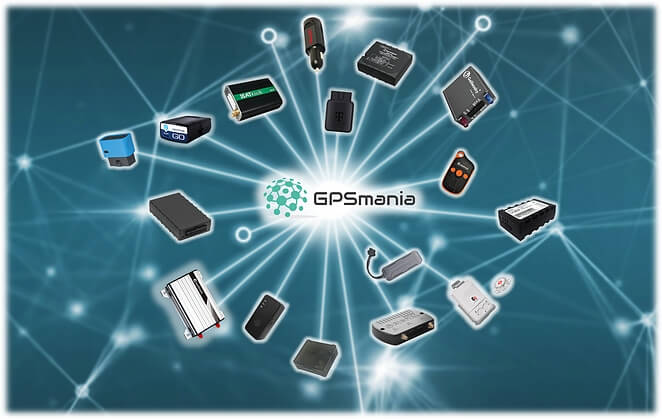Vehicle telematics market gets bigger every day and you, a GPS-tracking service provider, have numerous suppliers and hundreds of devices to choose from. Having so many options might get confusing so we are here to help you find the right equipment!
What are you going to do with it?
To select the right GPS hardware, you need to answer a few basic questions. Ask yourself:
- For which industry and application am I looking the products for? Is it for tracking cars? Trucks? Maybe assets, stationary objects or people?
- In which environmental conditions devices will be working in? Does it get very cold or hot outside? Is the device going to be exposed to harsh conditions like water or mud? Will devices go to remote locations?
- Is the solution meant for vehicle recovery and preventing theft or is fleet control the main need?
- Which accessories and peripherals are required for the solution I want to provide?
Types of devices
In general terms, there are 3 types of hardware: Plug & Play, Hardwired-installed, and Portable stand-alone devices, each being more suitable for certain segments and applications and with different levels of functionalities.
Plug & Play:
Most of them are OBDII-connected devices that just need to be plugged into the OBD port of a car to make them work (or 6/9 pin connector for trucks through adapters). Alternatively, you can also find some devices that are powered through the vehicle’s cigarette lighter socket.
Some manufacturers offer this format because of the ease of use but others offer advance information-reading of the vehicle’s CANbus and OBD parameters.
- Pros: They are user-friendly and it is not required to have a professional installer to make them work.
- Cons: Most of them have the limitation of not allowing the interaction with many peripheral and as easily as they can be installed also can be removed, therefore they are not the most suitable when there is a heavy need for security, related to vehicle theft.
- 💡- Several devices support Interface expanders or Bluetooth technology which makes them more flexible to interact with peripherals. Some of them offer Wi-Fi hotspot features too!
Hardwired-installed:
Here you will find the widest range of GPS devices supporting all kinds of features, which will require you to consider at least the following things: the device dimension, mounting options, environmental protection, as well as Inputs, Outputs, and Interfaces supported.
Depending on the vehicle where you want to install a GPS device you will need to consider different equipment measurements, for instance, in a motorcycle or scooter you might need to mount a smaller device than in a truck due to space limitations.
If the device will work in harsh weather conditions (extremely hot, cold, dusty, humid, etc.) you need to consider devices with IP environmental protection.
Most devices by default will offer information like location, speed and distance traveled, which can be acquired from GPS data, and after that, you need to select a product depending on the level of complexity of your solution. Features like ignition detection, engine blocking or panic button will be covered by a simple I/O scheme but if you are planning to connect sensors or 3rd party devices you will require other interfaces like 1-wire or Serial Ports. For retrieving data from the vehicle’s CANbus your device needs to support the correct protocols (FMS/J1939/J1708 for semis and heavy trucks or OBDII and light-vehicle protocols for cars and vans).
If security features are important and the device is needed for theft or robbery situations, a decent-sized backup battery is required for the tracker to keep reporting in case of being disconnected and have enough time to react and recover the vehicle. The device also would need to support Jamming detection and provide a flexible configuration to perform different actions in case of an event.
- Pros: Those are the most suitable devices for professional use, they provide countless opportunities in terms of features and applications as well as interaction with peripherals, accessories, and 3rd party devices.
- Cons: It is required to have skills and product knowledge to configure and install this type of product. The more complex the solution is, the more skilled you need to be.
- 💡- It is crucial to consider that your supplier provides good documentation, tutorials, training and mainly, technical support. Some brands include the devices with the most common accessories like relays and panic buttons already preconfigured!
Portable:
Those devices are usually meant for assets or personal tracking and are fully powered by long-lasting internal batteries. Most of them offer basic location plus some features like emergency calls or embedded SOS buttons.
- Pros: Those devices are easy to carry and because of working with internal batteries installation is not required.
- Cons: Since functionalities are limited, they can be used only for a few segments.
- 💡- When used in assets, many manufacturers offer magnetic holders for easy mounting!
DO NOT FORGET!
Connectivity: Depending on the geographical location your device will require to cover different cellular networks: 2G, 3G and/or 4G-LTE. Make sure your device supports them so it is compatible with your SIMcards and have the proper fallback to the networks you might need to use in your country.
If you operate in the USA do not forget to check that the device is certified and supporting the specific bands of your mobile carrier!
Visit our MANUFACTURERS page to see the products of the main GPS-equipment suppliers and COMPARE the specs of their products!

